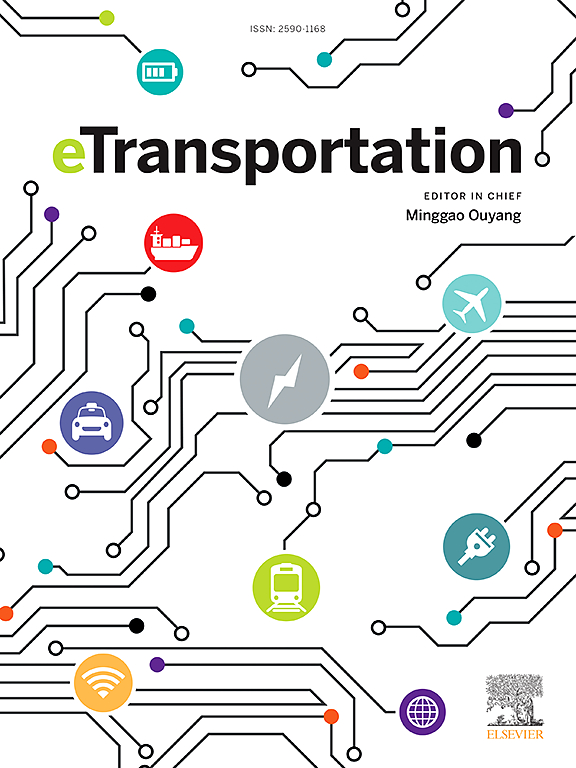Revealing the mechanism of pack ceiling failure induced by thermal runaway in NCM batteries: A coupled multiphase fluid-structure interaction model for electric vehicles
Abstract
Structure failure of lithium-ion battery (LIB) pack ceiling leads to the unintended release of combustible and poisonous substances during thermal runaway (TR), resulting in personnel injuries and financial losses. However, limited research has been conducted on the mechanism behind pack ceiling failures. In this study, we developed a coupled multiphase fluid-structure interaction (FSI) model to simulate the evolution of up-cover baffle under the TR impact of a 52 Ah NCM battery. Our findings reveal several important insights:1) the maximum force and temperature on the baffle are 13.01 N and 598.5 °C in experiment; 2) the simulation shows that particles exert higher temperature and greater force on the baffle compared to the gas phase; 3) the overall equivalent stress in the stainless-steel baffle surpasses the tensile strength that incurs crack on the baffles. According to the validated model, we find that the baffle structure failure is caused by the thermal stress from particle-structure heat conduction. Furthermore, this observation is applicable to the structure failure problems associated to the thermal runaway of high-density battery that involves enormous particles. In addition, the insulation layer is found to be more effective than the gap distance in protecting the pack ceiling. These findings offer a valuable insight into the structure design of LIB pack, and provide the guidance toward future battery integration technologies.

 求助内容:
求助内容: 应助结果提醒方式:
应助结果提醒方式:


